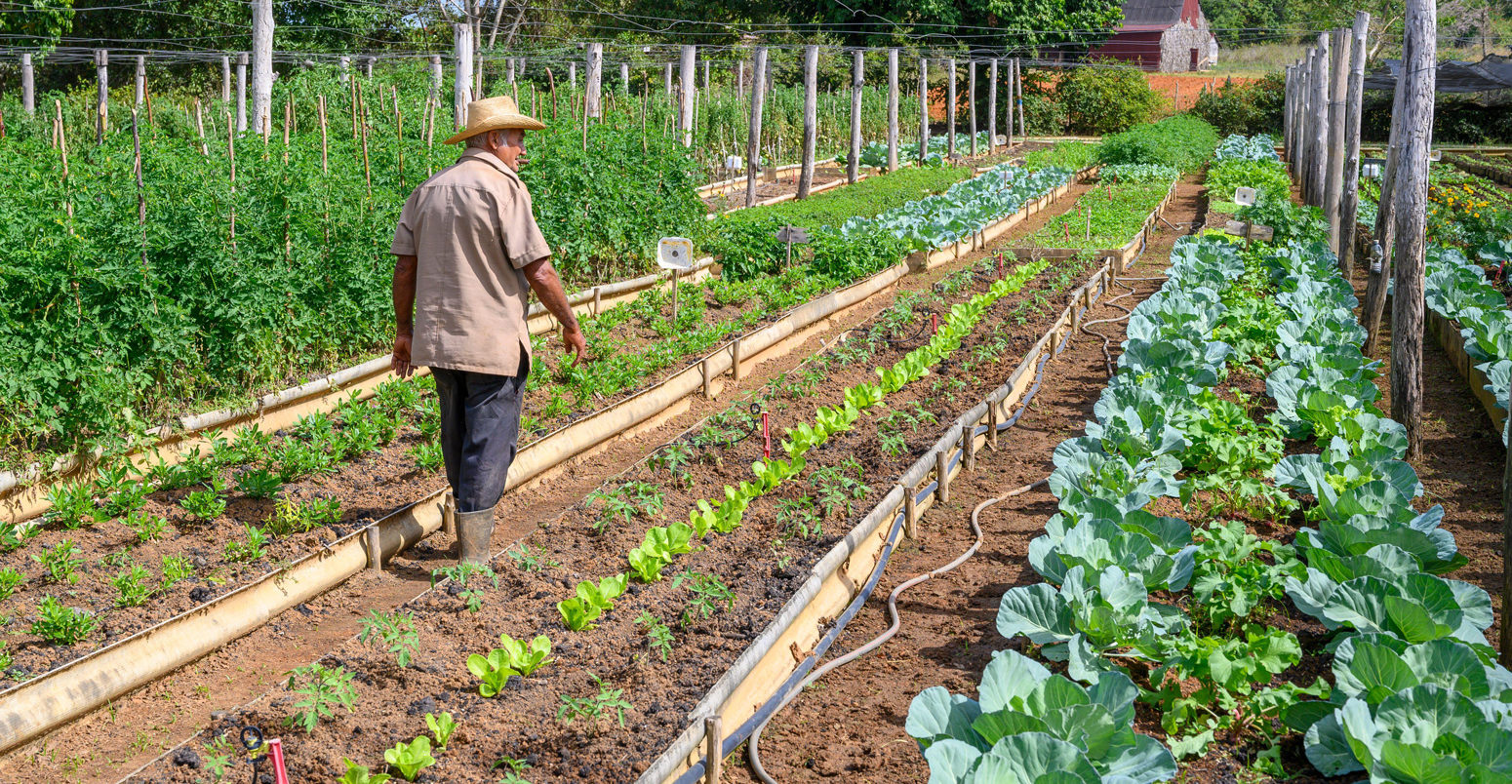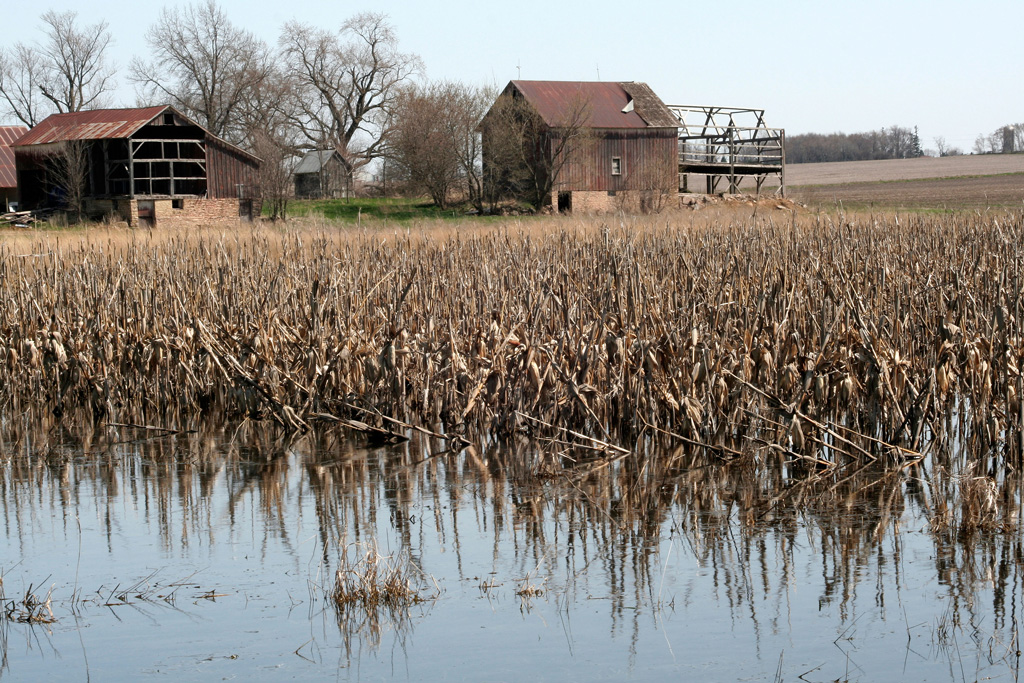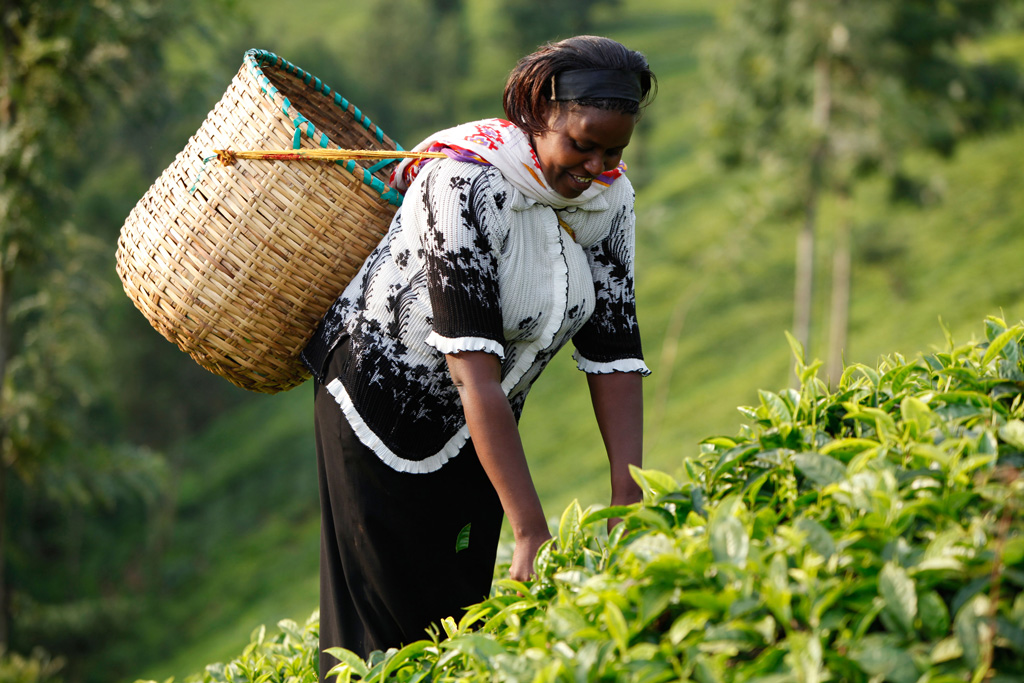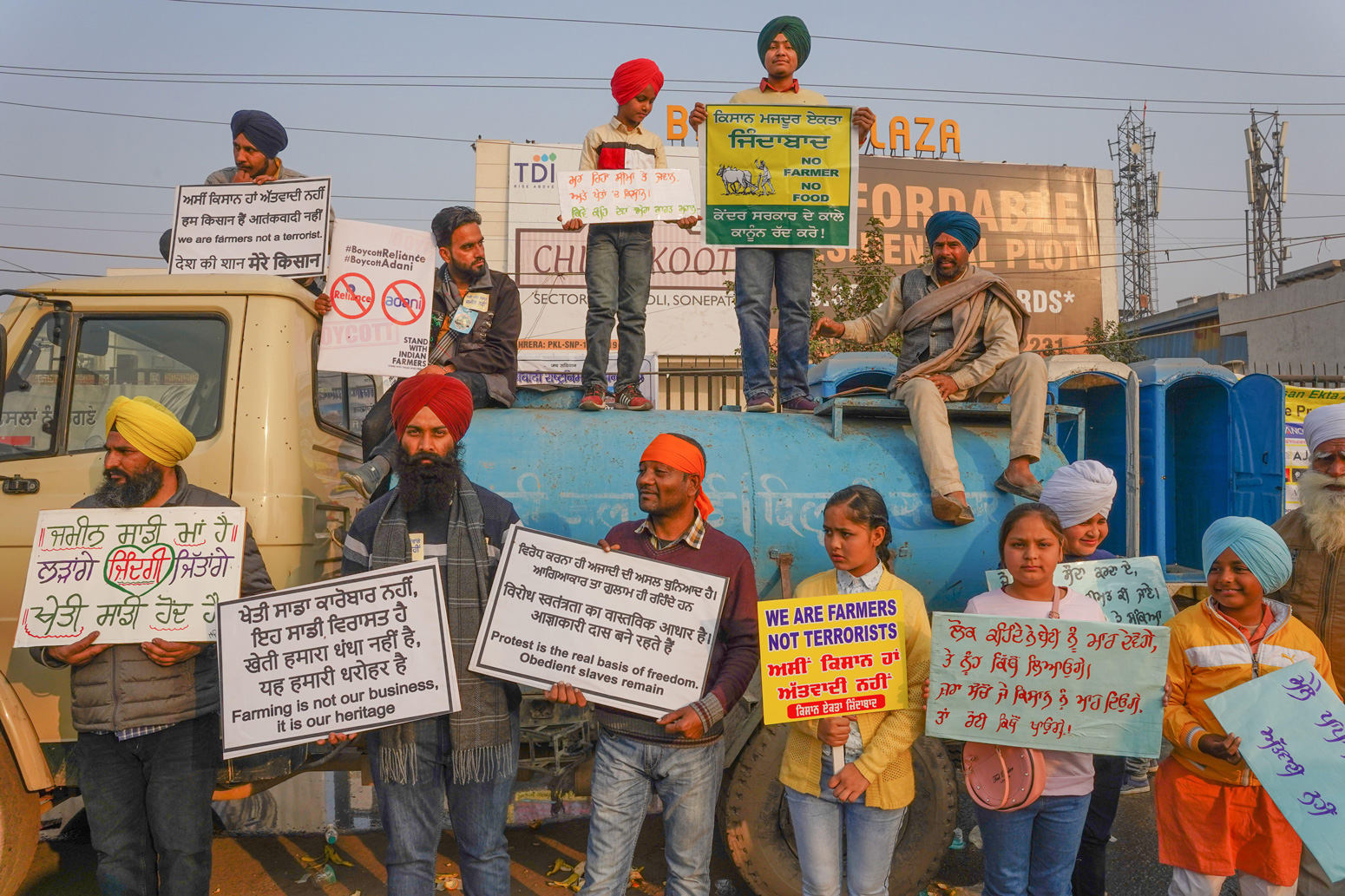
Climate justice: The challenge of achieving a ‘just transition’ in agriculture
Giuliana Viglione
10.06.21Giuliana Viglione
06.10.2021 | 2:00pmAlthough often overlooked in discussions around climate policy, agriculture is beginning to earn recognition as both a driver of climate change and a key part of the solution.
At the same time, there is increasing awareness of the need to transform the way that food is produced, processed and consumed in order to maintain the health of both people and the planet.
- Analysis: In-depth Q&A: What is ‘climate justice’?
- Analysis: Which countries are historically responsible for climate change?
- Analysis: The lack of diversity in climate-science research
- Experts: Why does ‘climate justice’ matter?
- Researchers: The barriers to climate science in the global south
- Guest post: An Indigenous peoples’ approach to climate justice
But just as the livelihoods of coal miners and other workers in the fossil-fuel industry are threatened by the move away from fossil fuels, so too are many farmers’ lifestyles by proposed transformations in agriculture.
Yet these changes are necessary, many experts say, in order to reduce the climate impact of today’s highly industrialised agricultural sector.
Today, non-governmental organisations, academic researchers and some farmers’ groups are beginning to envision a “just transition” for agriculture.
The idea is to reduce the impacts of agriculture while ensuring the livelihoods of those who cultivate, produce and process the world’s food.
Transforming communities
The concept of a “just transition” is one that emerged from labour unions in the US in the 1970s as strengthened environmental regulations led to massive job losses among workers in certain sectors. It has since become popularised in discussions of widespread shifts away from fossil fuels, but is often left out of discussions on transforming agriculture and food systems.
(For more on the history of the “just transition” framework, see Carbon Brief’s detailed explainer on a just transition in energy.)
As in the energy sector, the aim of a just transition in agriculture is to ensure that workers do not get left behind as the world moves away from carbon-intensive practices.
An agricultural just transition “means recognising that the impacts of climate change are going to be affecting people”, Dr Marcia DeLonge, the research director of the food and environment programme at the Union of Concerned Scientists, tells Carbon Brief. She continues:
“[Farmers and workers] are going to be bearing the brunt of a lot of changes that need to be made to protect the food system. And it’s so essential that we find ways to support them in that transition, to make sure that their lives and livelihoods are protected…But the other really key piece of a just transition is recognising that for those farmers and workers who are already struggling the most, the impacts of climate change will affect them the greatest.”
Taking the approach of a just transition is also a way to address the “deep injustice in the food system,” says Teresa Anderson, a climate policy coordinator at ActionAid International, a non-governmental organisation focused on poverty eradication and social justice. She tells Carbon Brief:
“Just transition is about carefully designing what you’re shifting to, as well as how that shift is done. So it’s about the outcome, as well as the process. And if it’s done well, just transition can be a really effective way of transforming communities that might otherwise resist climate action, to help them become powerful advocates for change.”
In agriculture, in particular, the need for a transformation is paramount. Food systems are responsible for about one-third of global emissions – almost 60% of which can be attributed to animal-based foods, such as meat and dairy, according to one recent study.
Around one-third of food produced around the world is wasted post-harvest. If food waste were a country, it would be the third-largest emitter of greenhouse gases. And yet more than 2 billion people are food-insecure, according to the UN Food and Agriculture Organization.

In addition, agriculture is often identified as one of the sectors most vulnerable to climate change. Droughts, floods, wildfires and heatwaves have all destroyed crops, reduced harvests and impoverished farmers around the world in recent years.
Climate change is putting farmers and labourers in the food sector at risk, too. There is increasing recognition of the occupational hazards that farm labourers face – and of how these hazards are being exacerbated by climate change.
On top of the growing threat of extreme weather events, DeLonge says, there are “more subtle changes” that are going to affect crop yields. Shifts in temperature or rainfall patterns can affect what crops can be grown where, and can introduce new pests and diseases into different ecosystems. She tells Carbon Brief:
“All of those kinds of impacts mean major changes, major disruptions for farmers and workers. All of these different impacts are going to require different types of resilience.”
As a result, DeLonge says, changes in food systems need to consider climate change adaptation, in addition to mitigation.
A ‘horizontal’ approach
One of the most commonly discussed shifts is a move towards “agroecology” – a broad term that encompasses a multitude of sustainable farming practices. Agroecology involves considering both ecological and social concerns in order to design better food systems.
Generally speaking, agroecology is focused on promoting soil health, but, in practice, the specific methods and approaches used can vary widely, says Prof Helda Morales, an agroecologist at the College of the Southern Border (ECOSUR) in Mexico. She tells Carbon Brief:
“Agroecology doesn’t have recipes. It needs to be adapted to each situation.”
In many parts of the world, agroecology is already being practised on smaller scales. But, in some places, the methods are becoming more widespread. The case of “zero-budget natural farming” in India is one of five examples of agroecological scale-up examined by Morales and her colleagues in a 2018 paper.
The study looked at five case studies of places where large-scale shifts to agroecology had been successfully implemented. The authors analysed each scenario to determine the common threads that could indicate the possibility for success.
The key, they found, is that all five of these massive transformations occurred as a response to a crisis: whether due to conflict, international sanctions, declining agricultural productivity or farmers being unable to sustain a living. They wrote:
“These crises created political opportunities and propitious contexts for alternatives to the agro-industrial model. Within such climates, the seeds of agroecological [scale-up] could germinate and then be nurtured by [a] suite of interacting drivers.”
But crisis alone cannot explain the success of large-scale agroecology in these places, Morales says, because “many times, crisis paralyses us”. The real key, she adds, is organisation among farmers and labourers. She tells Carbon Brief:
“Farmers who are working by themselves – maybe they are doing great things for the environment, but only on a very small scale. But if they are connected with the neighbours, they can then have a big, big impact.”
Furthermore, she adds, these ideas have to be shared in a “horizontal way” – from farmer to farmer – rather than being imposed from the top-down.
This horizontal approach is one that rings true to Anderson. In December 2019, Anderson authored a white paper for ActionAid International entitled, “Principles for a just transition in agriculture”. The report lists four key tenets for guiding an agricultural just transition:
- Address – and do not exacerbate – inequalities
- Transform the food system to work for people, nature and the climate
- Ensure inclusiveness and participation in planning processes
- Develop a comprehensive framework that considers the needs and perspectives of different groups and links local, regional and national solutions
Any large-scale transition in farming practices needs to provide a social safety net for farmers making that transition, Anderson says. And this need is magnified for farmers in the global south and from marginalised groups. She tells Carbon Brief:
“The poorer and more marginalised [farmers are] and the more barriers that farmers face, the more difficult it’s going to be for them to make a transformation.”
She points out that in some parts of the global south, women make up 50% of farmers, yet they are often systematically excluded from extension programmes, decision-making and access to financial support.

Dr Stephen Whitfield, an environmental social scientist at the University of Leeds, stresses that just transitions must be developed with input from the affected groups, rather than being handed down from groups in power. He tells Carbon Brief:
“What we mean by a just transition is that different people have been afforded a voice and that there’s been space for different perspectives to be negotiated and deliberated over – without necessarily being controlled by a project that’s been conceived of from the outside.”
Anderson agrees that underrepresented and marginalised groups must have buy-in from the beginning of the process in order to achieve a just transition. She says:
“It’s really important to find ways to include and hear from those that don’t usually have a voice. It’s not enough just to say, right, we’ve opened the door, but they didn’t walk through it, so too bad. It requires a proactive approach to engage with women, smallholders, migrant workers, indigenous peoples and young people.”
And beyond addressing inequities within a society, a just transition needs to take a larger-scale climate justice approach, she says. She tells Carbon Brief:
“A just transition needs to absolutely be underpinned by climate justice and equity values. And really needs to recognise that the largest emissions in the agricultural sector are in the global north where agriculture is heavily industrialised, and so action needs to be led by countries where industrialisation and emissions have been heaviest.”
A ‘big challenge’
Changes to farming practices – especially when made without consultation of farmers themselves – are often met with resistance.
Major protests from farmers erupted earlier this year following the Sri Lankan government’s wholesale push towards organic farming – a ban on importing or using chemical fertilisers and pesticides, announced by Sri Lankan president Gotabaya Rajapaksa in April. Rajapaksa’s government rolled back some of the restrictions in the following months.
The deeply personal and cultural ties that people have to their food make these discussions more difficult, Whitfield says, adding that it’s “hard to deal with equity at that very micro-scale”. And, often, the contentious debates – such as those around meat-eating or genetically modified organisms – leave no room for nuance or finding a middle ground. He tells Carbon Brief:
“When it comes to agriculture and food systems, people have different perspectives and priorities that come into conflict with each other. There’s very rarely a solution that is a win-win for everyone.”
Another barrier to achieving an agricultural just transition is the formation and composition of the labour force. The seasonal – and often transient – nature of agricultural labour means that farmworkers’ unions see lower participation rates than their industrial counterparts.
Agricultural unions also “tend to be more representative” of farmholders than the workers that they hire, who are often from marginalised groups, Anderson says. As a result, these labourers often “don’t have unions fighting their cause for a just transition”.

For Devinder Sharma, a food- and trade-policy analyst based in India, the “rampage” of the free markets that have encouraged surplus production and agricultural exports must be addressed in order to ensure fair compensation to farmers. He tells Carbon Brief:
“The world has actually failed to ensure that farmers get a stable income; the world has actually failed to ensure that they get a remunerative price for what they produce. No wonder farmers are getting out of agriculture or farmers are dying in big numbers…Any transition we expect cannot happen on a hungry stomach.”
Experts argue that if the world expects farmers to change their practices, it must provide them with “safety nets” such as income assurance – making sure that farmers know they will be able to make a living and will be supported in making these changes. Anderson says:
“You may well lose income for the first few years, but it’s in the national – and in fact, global – interest for you to make that transition. So it should be supported by social protection systems.”
Furthermore, Sharma says, this income assurance should not come in the form of the agricultural subsidies that currently make up such a high proportion of farmers’ incomes in Europe and the US. (A recent report by three UN agencies found that nearly 90% of agricultural subsidies and other financial support are “harmful” to humans and the environment.)
Instead of relying on subsidies to prop up farmers, Sharma says, governments could put mechanisms in place for ensuring that farmers are paid a fair price for their food, as Spain did in 2020 when it introduced a law prohibiting the sale of food below the cost of production. That’s “just one example”, Sharma says, then asks: “But instead of waiting for examples, why can’t we create our own system?”
Although making the necessary changes to the world’s food systems is a “big challenge”, DeLonge says, it’s also a “big opportunity”. She tells Carbon Brief:
“It’s time – it’s been time for a long time – to transform the food system. [A just transition] is just one more reason to do it. It’s a huge opportunity to do it in a way that treats people right.”
However, on the policy stage – in contrast with the discussions surrounding the decarbonisation of the energy sector – the framework of a just transition is not yet being applied to agriculture. Whitfield says:
“In energy systems, the kind of just transition discourse has really taken off. And it has become quite mainstream within the UNFCCC [UN Framework Convention on Climate Change]. So when we talk about transitions to net zero, there is a strong focus on just transitions. And it hasn’t become mainstreamed in the same way when we talk about agriculture and food systems.”
The EU Farm to Fork Strategy includes some language “acknowledging the need for a just transition”, Anderson says, but no concrete plan for adopting such an approach.
Over the past four years within the UNFCCC, an agriculture working group has been working with a mandate of “trying to mainstream agriculture considerations into the UNFCCC agendas”, Whitfield says, but with “quite an agronomic or technical perspective” and little consideration for social aspects of change.
With the cycle of that working group winding down, he hopes that the next conversations around agriculture will have a stronger focus on equity and justice in food systems. Whitfield and his colleagues have produced a policy brief along these lines that will be shared at COP26 in Glasgow, and are developing an exhibit at COP that will feature case studies of agricultural transformations that were carried out through an equity framework.
‘Agrarian distress’
India offers an insight into the scale of the challenge facing agriculture today.
Across the country, more than 40% of the labour population is employed in agriculture, according to a 2018 report by the UN Development Programme. Statistics compiled by the Indian government’s National Statistics Office in 2019 show that 54% of households are agricultural ones. In some places, such as the northwestern state of Rajasthan, that percentage is well over 70%.
Yet the proportion of farmers in India is declining – down from over 60% just three decades ago – as people abandon their farms or move into urban areas.
Mass mobilisations of farmers have been occurring for over a year as a response to three farm acts that relax the regulations surrounding the sale of their goods. While the government claims the acts will empower farmers and transform that agricultural sector, protesting farmers say that these laws will hurt their livelihoods.

Rising temperatures, changing rainfall patterns and extreme weather events have all taken their toll on agriculture in the country.
The hardships facing Indian farmers can have devastating consequences. On average, 28 people who depend on agriculture for their livelihoods die by suicide in India every day.
These issues are not unique to India, Sharma tells Carbon Brief:
“Indian agriculture, like agriculture everywhere in the world, is passing through a terrible, terrible agrarian distress.”
But where it illustrates the challenges of an agricultural transformation, India also provides a potential blueprint for a path forward.
The state of Andhra Pradesh, in the south-eastern part of the country, has taken a novel approach to addressing these intersecting crises. In 2018, its government announced a plan to support its 6 million farmers in transitioning to a fully natural farming system, known as “zero-budget natural farming” (ZBNF).
The use of local resources reduces costs for farmers, easing the transition. By the year 2024, all farms across Andhra Pradesh are set to be using chemical-free agriculture.
In parts of the state where the transition to natural farming has already begun, things are already improving for both farmers and the environment, Sharma says. He tells Carbon Brief:
“In those areas where the transition has already taken place, we don’t see any farmer suicides. We also see that the farmers’ income, comparatively, is much better in those areas. We also see that the soil health and the environment is much, much better in those areas.”
Although not specifically carried out through a “just transition” framework, the shift to ZBNF is one of the largest-scale agricultural transformations in the world, Sharma says. “Whether it will be taken up by other states,” he says, “only time will tell”.
Proponents of industrialised agriculture or technological solutions argue that the world needs to continue to boost production and boost crop yields in order to be able to feed a population of 10 billion people by the year 2050.
Sharma says these statistics are used to create a “fear psychosis”, noting that the world already produces enough food to feed 14 billion people, by some estimates. (Other estimates put that number around 10 billion.) He asks:
“When we already produce food for 14 billion people, where is the crisis that we are going to face as far as production is concerned in the years to come?”
That’s not to say that people should not be trying to improve production, he says. But the real problem, in his view, is the amount of food waste generated by our current food systems.
As the failures of modern agricultural systems are laid bare, recognition of the need for change is becoming more and more evident, Sharma warns:
“The world is beginning to realise the folly it committed, when it went for intensive farming systems across the globe…The world is at least now beginning to realise that we have to move from that kind of environmentally destructive farming system…Increasingly, there is a growing awareness that this not only is possible, but this has to be done.”
-
Climate justice: The challenge of achieving a ‘just transition’ in agriculture
-
Climate justice: What does a ‘just transition’ look like in agriculture?

